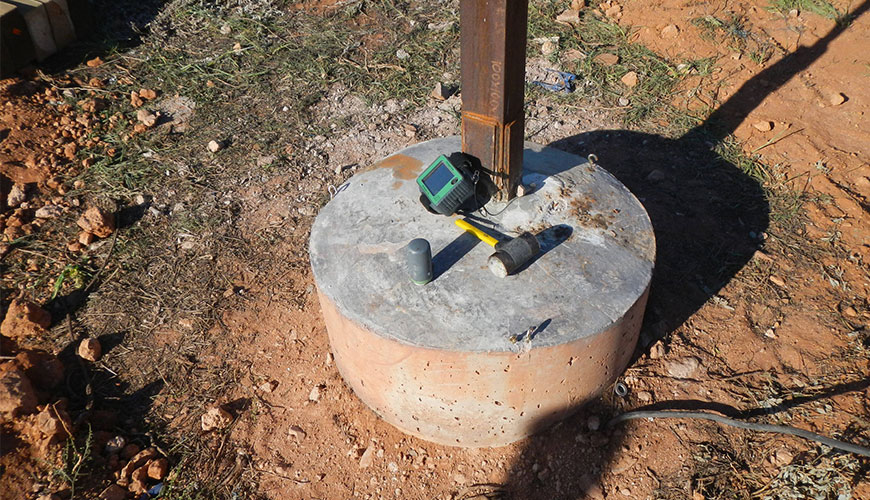

EUROLAB laboratory provides testing and compliance services within the scope of ISO 1431 standard. This standard specifies procedures intended for use in estimating the resistance of vulcanized or vulcanized materials at a given temperature and concentration of ozone under conditions that exclude the effects of direct exposure to air containing light, of plastic rubbers against cracking under static or dynamic tensile stress.

Test pieces are exposed under static tensile stress, under continuous dynamic stress, or under alternating stress in a closed chamber at constant temperature. The test pieces are periodically inspected for cracking. Three alternative evaluation procedures have been defined for the selected ozone concentration values. These:
The presence or absence of cracks is determined after a fixed period of exposure for a certain period. If necessary, an estimated degree of cracking is made.
The time to first appearance of cracks, any given static strain, dynamic strain, or combination of dynamic and static stresses are examined.
The threshold strain is determined for any given exposure time. (applies only to static tensile-strain tests)
Test Environment for ISO 1431-1
This should be a closed, unlit room that is thermostatically controlled within ± 2 °C of the test, covered or constructed with a material (e.g. aluminium), easily decompose ozone. Dimensions shall be such that they meet the requirements of 5.5. A light can be attached to inspect the test, but this will remain off at other times.
The Source of the Bard Air
To avoid errors in ozone concentration, ozonated air will be largely free of nitrogen oxides. Therefore, one of the following apparatus parts will be used: ultraviolet lamp, silent discharge tube.
Tools for Adjusting Ozone Concentration
When using an ultraviolet lamp, the ozone concentration can be controlled by adjusting the voltage. It is applied to the tube or to the inlet gas or diluent air flow rate, or by shielding part of the tube from UV light. When using the silent discharge tube, the ozone concentration can be controlled by adjusting the voltage.
Ozone Concentration Determination Tools
A means of sampling ozonated air from around the test pieces in the room and an estimation of ozone content will be provided.
Gas Flow Adjustment Tools
A mechanism shall be provided which can adjust the average velocity of the ozonated air flow. A value of not less than 8 mm/sec of the test chamber and preferably between 12 mm/s and 16 mm/s is calculated by dividing the measured gas flow velocity in the chamber by the effective cross-sectional area of the chamber.
Assembly of Test Pieces for Static Strain Testing
Clamps shall be fitted to keep the test pieces at the required elongation and in contact with both sides.
Assembly of Test Pieces for Dynamic Strain Testing
The device must be made of a material that does not decompose easily (for example, aluminium). Its main features are fixed pieces equipped with handles to hold one end of each of the test pieces in.
conditioning
Conditioning in the untensioned state For all tests, the minimum time between curing and straining of the test pieces shall be 16 hours. It is recommended that aluminum foil be placed between the test pieces and layers of different composition, but other methods that prevent the migration of additives can also be used.
Conditioning in the stretched state (for static strain testing only) After stretching, the test pieces should be primarily conditioned for a period of 48 hours to 96 hours.
Exposure to static stress is not a simple relationship, Ozone cracking being stress dependent. The number of cracks on it is related to the test piece dimensions and this relationship is dependent on the threshold strain for a given exposure. Cracks will coalesce as exposure increases, especially when they are numerous on the surface.
Dynamic strain exposure Under dynamic strain conditions, a distinction must be made between ozone cracking and cracking. Ozone attack is the sole cause of crack initiation in cyclic strains. s Mechanical fatigue can occur even at low stresses when cracks reach a certain size. For these reasons, the sorting order of different rubbers may vary with the magnitude of the stress so that the conditions used in the test should match, as far as possible, those envisaged in service.
Eurolab provides ISO 1431-1 testing services to businesses.
To get an appointment, to get more detailed information or to request an evaluation, you can ask us to fill in our form and reach you.